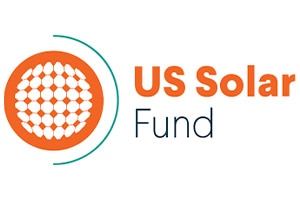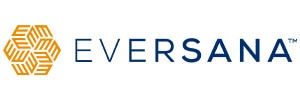



In today’s complex financial landscape, middle market and larger companies need a bank that understands their business and their industry. Key’s deep market expertise and relationship-led approach allow us to recognize opportunities and deliver strategic financial solutions that align with our clients’ goals.
Why Clients Choose Key
Over its 200-year history, Key has become one of the nation's largest bank-based financial service companies.

Well-capitalized
operations
Key operates above regulatory
capital requirements and with a
Common Equity Tier 1 ratio of 11.8%.

Strong credit quality
Key’s net charge-offs as a
percentage of average loans
is 43 basis points.

Robust assets and
deposits
Key has $188 billion+ in assets,
and $148 billion+ in deposits,
as of 3/31/25*.
Our Services
Whether it’s access to capital, industry insights or guidance to drive growth, Key provides resources businesses rely on to compete in a changing economy. See how the strength of a top financial institution and hands-on service of a leading regional bank can help you take your business to the next level.
Empowering businesses that shape the future.
We’re proud to work with commercial clients, businesses and organizations whose innovative ideas and execution have a lasting impact on people’s lives.
Stephanice Washington: Being homeless, not knowing when you got to go, taking your income, spending the whole income up to have a room for a night or two or three. Then having to eat out. Wasn't able to cook and stuff. Having to eat out. You know, that was a lot. I lost everything. I lost everything but the clothes I had on my back.
Robert L. Likes: KeyBank has an unwavering, deep commitment to affordable housing. Our mission and our objectives are to be a national leader in affordable housing, to help the bank always achieve an outstanding CRA rating. To be a major contributor to our community benefits plan and to help our clients and communities thrive.
Erica Haize: We need more affordable housing in this community. So, people are struggling with that a lot. We saw the need of helping people be part of a great community.
Kevin Loos: NRP made an initiative into housing and health care, and so we've created a few projects across the nation, partnering with hospitals to provide housing and health care. You’re next to the healthcare community, next to primary care doctors, next to emergency room help, and really it becomes a more of a wraparound type of service, being right next to the campus.
Robert L. Likes: It's adjacent to a hospital to help with healthy initiatives. It also has community space within the Affordable Housing project that provides job counseling, financial literacy training, digital training, all for the betterment of the tenants and the surrounding community, to help really uplift lives.
Stephanice Washington: The day I got the phone call that I could come in and pick up my keys, was the best thing that ever happened for me.
Erica Haize: This was like a steppingstone for them. Some of them, like I said, were homeless. They start living here, their lives change. Their family can see that their life is changing. And to come in a building like this, and having something so nice and brand new for the first time, it's life changing.
Stephanice Washington: Before I came to Via Sana, my whole check went on my light, my gas, my rent. Since I've been at Via Sana, I'm able to save up, so I'm able to go to Walmart and buy me a month's worth of food from my income now.
Erica Haize: I hope we can partner more so we can keep making a change in the community.
Robert Likes: Affordable Housing changes lives. There are so many positive, healthy outcomes and economic upward mobility, when you have a permanent residence that is safe, decent, clean, affordable, that is your home.
Stephanice Washington: My new apartment is my serenity, my peace, and my home.
Recent Deals
Key brings extensive experience in closing deals across industries to help clients strengthen their market position and achieve greater success.

a subsidiary of

acquired by

Financial Advisor
Summary
Cain Brothers, a division of KeyBanc Capital Markets, served as exclusive financial advisor to the County of Santa Clara in the acquisition of Regional Medical Center from HCA Healthcare (NYSE: HCA).
On April 1, 2025, Santa Clara County completed the acquisition of Regional Medical Center from HCA Healthcare, integrating RMC into the County of Santa Clara Health System. The acquisition strengthens its commitment to the health and well-being of all communities in Santa Clara County.
Regional Medical Center is a premier healthcare facility known for providing comprehensive medical services, including emergency care, specialized treatments, and advanced surgical procedures. With this acquisition, RMC will expand important clinical programs and services, including trauma, stroke, obstetrics, and advanced cardiac services to patients living in East San Jose.
Santa Clara operates one of California’s most robust public healthcare systems, dedicated to serving the diverse needs of its communities. With a longstanding commitment to accessible healthcare for all residents, the county oversees the Santa Clara Health System, which includes hospitals, clinics, and specialty care services.
HCA Healthcare, a Fortune 500 company, is one of the nation’s leading healthcare providers, operating a vast network of hospitals and medical facilities across the United States.

a renewable energy fund invested in a portfolio of utility-scale solar power plants in the US, managed by

$165.5 Million
Senior Secured Credit Facilities
Coordinating Lead Arranger
Administrative Agent
Collateral Agent
Issuing Bank
Summary
On April 11, 2025, KeyBanc Capital Markets Inc. (KBCM) successfully closed $165.5 million in Senior Secured Credit Facilities (the Facilities) to refinance US Solar Fund’s (USF) operating solar portfolio. Amber Infrastructure Group (Amber or the Investment Manager) is the investment manager for US Solar Fund and responsible for USF’s investment origination, asset management, and fund management.
The Facilities comprise a $127.1 million Term Loan, a $10.5 million Revolving Credit Facility, and $27.9 million in Letters of Credit. The proceeds were used to refinance the existing debt on the portfolio and smooth out amortization to help US Solar Fund manage its dividend yield. KBCM acted as the Coordinating Lead Arranger, Administrative Agent, Collateral Agent, and Issuing Bank.
The portfolio includes 41 operating solar assets with a total capacity of 443 MWdc, diversified across California, North Carolina, Oregon, and Utah.
Investment Manager Overview
Amber Infrastructure is an international infrastructure specialist, focused on investment origination, development, asset management, and fund management. Amber’s core business focuses on infrastructure assets across the public, transport, energy, digital, and demographic infrastructure sectors. The Investment Manager is responsible for the day-to-day management of US Solar Fund, whose investment objective is to provide investors with attractive and sustainable dividends with an element of capital growth by owning and operating solar power assets in North America.

$931.5 Million
Initial Public Offering
Active Bookrunner
Summary
On April 1, 2025, SmartStop Self Storage REIT, Inc. (SmartStop or the Company) priced their Initial Public Offering, which featured a base offering of $810 million that grew to $931.5 million after the overallotment option was exercised. The Company plans to use the net proceeds from the offering towards redeeming 100% of its issued and outstanding Series A Preferred Stock, paying down existing debt under its credit facility and repaying an acquisition facility. KeyBanc Capital Markets served as Active Bookrunner on the transaction.

North Mathews & Brynhurst
$50.2 Million
Construction Loan, LIHTC Equity, & Permanent Loan
Summary
KeyBank Community Development Lending and Investment (CDLI) provided $23.3 million in construction loans and invested $10.7 million in low-income housing tax credit (LIHTC) financing, and KeyBank’s Commercial Mortgage Group also arranged $16.2 million in Freddie Mac TEL permanent financing for the construction of two affordable multifamily housing projects in Los Angeles. The sponsor and developer, HVN Development, also provided loans in the amount of $2.4 million for these two projects. California Housing Finance Agency (CHFA) will also issue $14.4 million of Multifamily Housing Revenue Bonds, as well as $7 million in recycled bonds to fund the permanent loans.
The first apartment (North Mathews), located at 121 North Mathews Street, is a single four-story, 40-unit building that will comprise of six one-bedroom apartments and 33 two-bedroom apartments, as well as one two-bedroom, revenue-generating manager unit. All 39 LIHTC units will be rent-restricted and restricted to tenants earning at or below 80% of area median income (AMI). Rent restrictions are as follows: four units at 30% AMI, four units at 50% AMI, 23 units at 60% AMI, and eight units at 80% AMI.
The second apartment (Brynhurst), located at 6018 Brynhurst Avenue, is a single four-story, 50-unit building that will comprise of seven one-bedroom units and 42 two-bedroom units, as well as one two-bedroom, revenue-generating manager unit. All 49 LIHTC units are restricted to tenants earning at or below 80% AMI. Rent restrictions are as follows: five units at 30% AMI, five units at 50% AMI, 29 units at 60% AMI, and 10 units at 80% AMI.
North Mathews and Brynhurst are located in highly walkable areas and near the LA Metro system, which provides bus and subway service throughout Los Angeles. The property manager, Aperto Property Management, will oversee the management of both apartments.
LifeSTEPS will offer on-site supportive services including financial literacy, computer training, and home-buyer education, as well as health and wellness programs. All services are free for tenants and paid for by the sponsor/developer, HVN Development.
HVN Development has partnered with Integrity Housing, an experienced developer committed to identifying innovative solutions to ease California’s housing crisis by increasing the affordable housing supply. Integrity Housing has completed nearly 40 affordable housing projects in California.

Miami Inspiration Housing
$35 Million
Construction Loan & LIHTC Equity
Summary
KeyBank Community Development Lending and Investment (CDLI) provided a $13.9 million construction loan and $21.4 million in low-income housing tax credit (LIHTC) financing for the construction and rehabilitation of Miami Inspiration Housing in Miami, Arizona. The project also received $500,000 of soft debt financing from the Arizona Department of Housing. This development marks a significant milestone in the community as it is the first affordable housing project to be built in the market since 2009.
Miami Inspiration Housing will consist of the renovation of a non-occupied historical building with 16 units and the new construction of a second building with 24 units, creating a 40-unit total affordable housing complex. The property will provide quality housing for families, with income levels between 40%, 50%, and 60% of the AMI. Miami Inspiration Housing will provide families a safe and vibrant place to call home, positively impacting the community at large.
The development is located in Miami, a rural town approximately 80 miles east of Phoenix. The community is located within the Copper Corridor where mining and ranching still represent 20% of the county’s primary sources of employment, as several smaller copper mines and processing facilities remain active.
Miami Inspiration Housing is located near major local employers including Freeport McMoRan Mining, Capstone Mining, Globe and Miami Unified School Districts, Gila Community College, Cecil Trucking, and Cobre Valley Regional Medical Center. The property also sits just two blocks north of Highway 60, Miami’s main thoroughfare, and benefits from proximity to retail, healthcare, recreation, and other amenities.
The real estate developer, Chicanos Por La Causa (“CPLC”), is a community developer with a 56-year history of empowering lives through more than 30 different programs and services in Arizona and most recently in California, Colorado, Nevada, New Mexico, and Texas. Miami Inspiration is part of a larger strategy to bring diverse housing opportunities in rural and urban communities to meet local needs including wraparound education and social and workforce development services. Gorman Property Management, an affiliate of Gorman & Company (“Gorman”), will serve as the management company. Today, Gorman manages more than 60 apartment communities, totaling over 6,000 units.

has acquired

Left Lead Arranger
Joint Bookrunner
Administrative Agent
Summary
Together with the KeyBank Beach Point Direct Lending Program, KeyBanc Capital Markets and Cain Brothers, a division of KeyBanc Capital Markets, successfully closed on Senior Secured Credit Facilities supporting SK Capital’s acquisition of Spectrum Vascular.
SK Capital’s investment in Spectrum, a provider of vascular access and medication management products, will enable the Company to accelerate growth initiatives and expand its presence. Through its relationship with the Company and deep understanding of the end market, Cain Brothers was able to provide value-added support to SK Capital in their evaluation and execution of the transaction. The Credit Facilities consisted of a Revolving Credit Facility, a Unitranche Term Loan, and a Delayed Draw Term Loan.
Spectrum Vascular is an innovative medical device company focused on vascular access and medication management. The Company’s mission is to improve the lives of patients worldwide by providing caregivers with high quality, innovative products with exceptional customer service. Innovation has been a core strategic pillar throughout Spectrum Vascular's history and many of its products have been designed to deliver antimicrobial protection and thrombus reduction. Spectrum Vascular was formed through the acquisition of the vascular access businesses of Cook Medical and AngioDynamics. For more information, please visit www.spectrumvascular.com.
SK Capital is a private investment firm with a disciplined focus on the specialty materials, ingredients, and life sciences sectors. The Firm seeks to build resilient, sustainable, and growing businesses that create substantial long-term value. SK Capital aims to utilize its industry, operating, and investment experience to identify opportunities to transform businesses into higher performing organizations with improved strategic positioning, growth, and profitability, as well as lower operating risk.


$1.025 Billion
Senior Secured Credit Facilities
Joint Lead Arranger
Joint Bookrunner
Summary
Transaction Overview:
On March 28, 2025, KeyBanc Capital Markets Inc. (KBCM) successfully closed the syndication of $1.025 billion Senior Secured Credit Facilities for Catawba Nation Gaming Authority (CNGA), a tribal instrumentality of the Catawba Indian Nation (Catawba). CNGA owns and operates Catawba Two Kings Casino in Kings Mountain, North Carolina.
The financing included a $75 million revolver, $415 million delayed Draw Term Loan A and a $535 million Term Loan B. Proceeds will be used to refinance existing debt and fund construction of CNGA’s expansion project at its Two Kings Casino.
This transaction marks the second syndicated financing for CNGA since 2024.
About Catawba Indian Nation:
Catawba Indian Nation is comprised of ~4,100 enrolled members and is the only federally recognized tribe in South Carolina. The 700-acre Catawba reservation is located on the banks of the Catawba River.
About the Expansion Project:
CNGA owns and operates Catawba Two Kings Casino, which is located on tribal land in Kings Mountain, North Carolina. It is the only casino in the Charlotte market, having initially opened in July 2021. The casino currently features over 1,100 slot machines, 14 table games, and two food and beverage outlets. Following the $1 billion expansion project, the offerings will be expanded to include over 4,300 slot machines, 92 table games, and 16 food and beverage outlets.

$43.8 Million
Follow-On Offering
$148.3 Million
Series F Convertible Preferred Stock Offering
$1 Billion
Senior Secured Revolving Credit Facility
Joint Bookrunner
Capital Markets Advisor
Joint Lead Arranger
Summary
On March 24, 2025, KeyBanc Capital Markets (KBCM) successfully priced a $43.8 million follow-on offering for Prairie Operating Co. (Prairie or the Company). Total shares allotted in the offering were 9,736,904 at an offering price of $4.50 per share, including the overallotment option. The Company also announced a concurrent registered offering of 148,250 shares of new Series F Convertible Preferred Stock and certain warrants totaling $148.3 million in gross proceeds. Additionally, KBCM joined Prairie’s upsized $1.0 billion senior secured revolving credit facility.
The proceeds of both offerings as well as borrowings under the credit facility will be used to fund a portion of the purchase price for the Company’s $602.75 million acquisition of certain oil and gas assets in the Denver-Julesburg Basin from Bayswater Exploration and Production and its affiliated entities. KBCM served as Joint Bookrunner on the follow-on offering, Capital Markets Advisor on the convertible preferred transaction and Joint Lead Arranger and Joint Bookrunner on the credit facility. The acquisition closed on March 26, 2025.

$1 Billion
Convertible Senior Notes due 2030
Co-Manager
Summary
KeyBanc Capital Markets and Cain Brothers, a division of KeyBanc Capital Markets, successfully priced $1.0 billion of Convertible Senior Notes Due 2030 for Integer Holdings Corporation.
The offering was upsized from $750 million to $875 million, prior to the exercise of the overallotment option. The Notes will mature in 2030 and bear interest at a rate of 1.875% per annum, with a conversion premium of 27.50%. Both the coupon and the conversion premium priced at the midpoint of the initial talk ranges. Proceeds from the offering will be used to refinance a portion of the company’s outstanding 2028 Convertible Senior Notes, repay borrowings under its revolving credit facility, fund the cost of capped call transactions, and for general corporate purposes.
Integer is one of the largest medical device contract development and manufacturing organizations in the world, serving the cardiac rhythm management, neuromodulation, and cardio and vascular markets. As a strategic partner of choice to medical device companies and OEMs, Integer is committed to enhancing the lives of patients worldwide by providing innovative, high-quality products and solutions. Integer’s brands include Greatbatch Medical® and Lake Region Medical®.

acquired

Senior Secured Credit Facilities
Sole Lead Arranger
Administrative Agent
Summary
On March 17, 2025, KeyBanc Capital Markets (KBCM) successfully closed Senior Secured Credit Facilities of an undisclosed amount in support of Sandbrook Capital’s acquisition of Intellirent. KBCM served as Sole Lead Arranger and Administrative Agent on the transaction.
Intellirent specializes in the global rental of field-ready test equipment for electrical applications, offering tailored selection, preparation, technical support, and logistics to ensure optimal performance and delivery. The company offers a broad range of critical testing equipment for field service technicians to perform maintenance and repair, installation and commissioning, and emergency response on critical electrical infrastructure.

acquired

a portfolio company of

$1.28 Billion
Buy-Side Advisor
Summary
On March 14, 2025, Diversified Energy Company PLC (NYSE & LSE: DEC) (Diversified or the Company) closed on its acquisition of Maverick Natural Resources, LLC (Maverick) for $1.275 billion. Diversified agreed to acquire the assets for ~$207 million of cash, ~21.2 million of Diversified common shares, and assumed ~$700 million of Maverick’s outstanding debt. The transaction enters Diversified into the Permian Basin and Rockies and expands its current operations in Ark-La-Tex and the Western Anadarko. The combined company will have an average daily production of ~1,200 MMcfe/d.
KeyBanc Capital Markets was selected as a Buy-Side Advisor to Diversified because of its deep relationships and extensive experience in Ark-La-Tex, the Permian Basin, the Rockies, and the Western Anadarko.
Diversified is a leading independent energy company focused on natural gas and liquids production, transportation, marketing and well retirement, primarily located within the Appalachian and Central regions of the United States. The Company’s strategy is to acquire existing long-life assets and to make investments in those assets to improve environmental and operational performance under a modern field management philosophy. Diversified’s target assets are characterized by multi-decade production profiles and low decline rates.
Maverick is a private E&P, backed by EIG Global Energy Partners (EIG). Maverick engages in the exploration and production of oil and gas, primarily in Ark-La-Tex, the Permian Basin, and the Western Anadarko. Maverick has additional operations in Florida and the Rockies. At the time of the transaction, Maverick produced ~350 MMcfe/d that was ~55% liquids-weighted.
Headquartered in Washington, D.C., EIG is a leading provider of capital to the global energy industry since 1982, with ~$49.8 billion in committed capital in 416 portfolio investments across 44 countries.

$1.5 Billion
Senior Secured Credit Facility
Administrative Agent
Coordinating Lead Arranger
Sole Bookrunner
Joint Lead Arranger
Summary
On March 14, 2025, KeyBanc Capital Markets served as Administrative Agent, Coordinating Lead Arranger, Sole Bookrunner and Joint Lead Arranger on a $1.5 billion Senior Secured Revolving Credit Facility for Diversified Energy Company PLC. Proceeds will be used to fund the acquisition of Maverick Natural Resources, LLC and for general corporate purposes.

Overlook Apartments
$10.8 Million
Fannie Mae Fixed Rate Loan
Summary
The transaction includes a $10.8 million ($139,408/unit) non-recourse, first mortgage loan secured by a 100-unit, partially age-restricted, garden-style apartment complex known as Overlook Apartments, located in Middletown, New York. Built in 1983 and renovated in 2007, the property consists of six, two-story residential buildings and one community/office building. The improvements are situated on a seven-acre site. The proposed loan will be used to refinance the property's existing debt. The loan is structured with a seven-year term, and subsequent to a three-year interest only period, amortizes on a 35-year schedule.

a portfolio company of

$625 Million
Senior Secured Credit Facilities
Joint Lead Arranger
Joint Bookrunner
Summary
KeyBanc Capital Markets and Cain Brothers, a division of KeyBanc Capital Markets, successfully closed the syndication of $625 million of Senior Secured Credit Facilities in support of ImageFirst Holdings, a portfolio company of Calera Capital.
The Credit Facilities consist of a $125 million Revolving Credit Facility, and a $500 million Term Loan B. Proceeds from the Credit Facilities will be used to refinance existing indebtedness and fund a distribution to shareholders.
ImageFirst is a leading provider of outsourced laundry and textile rental services with a focus on outpatient and specialty healthcare in the U.S. With 70+ locations across 33 states serving over 28,000 customer locations, the Company provides mission critical services to their customers who cannot care for patients without clean linens and other laundry products.
Founded in 1991, Calera Capital is a private investment firm based in San Francisco and Boston that has invested over $4 billion of equity into leading middle market companies. Calera has significant experience and a successful track record of investment in commercial services, healthcare services, and other businesses similar with ImageFirst.

has received an entity-level preferred equity investment from

Sole Placement Agent
Summary
On March 7, 2025, KeyBanc Capital Markets (KBCM) served as Sole Placement Agent to Terravet REIT, Inc. (Terravet) on their entity-level preferred equity investment (the Investment) from Sculptor Capital Management, Inc. (Sculptor). KBCM ran a broad marketing process that yielded critical mass of actionable investment proposals, which drove competition between potential investors and ultimately attractive terms and pricing. The Investment will be used to reduce debt and execute an active acquisition pipeline to further scale the platform.
KeyBank Real Estate Capital serves as Administrative Agent and Lead Arranger on the company’s Credit Facility as well as all other of Terravet Real Estate Solutions’ credit facilities across their private equity platform.
Terravet REIT is managed by Terravet Real Estate Solutions, which was first established in 2012 as the first institutional and preeminent aggregator of net leased veterinary and niche human healthcare real estate. Terravet aims to drive outsized risk adjusted returns through acquiring recession resistant real estate in highly fragmented healthcare sub sectors, primarily veterinary and ophthalmology. To date, the Terravet Companies have utilized proprietary relationships and its unique position within its market to acquire over 200 properties.
Sculptor is a leading global alternative asset management firm providing investment products in a range of areas including multi-strategy, credit, and real estate. Sculptor’s capabilities span all major geographies, in strategies including fundamental equities, corporate credit, real estate debt and equity, merger arbitrage, structured credit and private investments.

a portfolio company of


$1.058 Billion
Senior Secured Credit Facilities
Joint Lead Arranger
Joint Bookrunner
Administrative Agent
Summary
KeyBanc Capital Markets and Cain Brothers successfully closed the syndication of $1.058 billion of Senior Secured Credit Facilities in support of Eversana, a portfolio company of JLL Partners and Water Street Healthcare Partners.
The Credit Facilities consist of a $108 million Revolving Credit Facility and a $950 million First Lien Term Loan. Proceeds from the Credit Facilities will be used to refinance existing indebtedness and pay transaction-related expenses.
Eversana is a Chicago-based provider of drug commercialization services for pharmaceutical and biotechnology customers with over 6,000 employees and 30 locations across the globe. Services include strategic advisory, market access, global pricing, HEOR, and agency with expertise in over 100 therapeutic areas. The Company serves a diverse customer base of over 650 organizations, including the top 25 pharmaceutical companies and top 10 biotechs in the world.
JLL Partners is a New York–based middle-market private equity firm specializing in healthcare, industrials, and business services. Since being founded in 1988, JLL Partners has raised $5.8 billion across eight funds, working to accelerate growth and elevate their portfolio companies through organic growth initiatives, operational enhancements, and strategic M&A.
Founded in 2005, Water Street Healthcare Partners is a private equity firm focused exclusively on the healthcare industry. The Sponsor has ~$7.5 billion in AUM and is investing out of its fifth fund. Water Street is currently an investor in 21 healthcare companies across numerous healthcare subsectors.

1.7 Billion
Senior Secured Credit Facilities
Coordinating Lead Arranger
Joint Bookrunner
Syndication Agent
Summary
On March 4th, 2025, KeyBanc Capital Markets Inc. (KBCM) successfully closed on $1.7 billion of Senior Secured Credit Facilities (the Facilities) supporting Copia Power’s utility-scale solar plus energy storage project (Maricopa or the Project). The Facilities comprise a $1,416 million construction-to-term loan, a $90 million tax-credit bridge loan, and $204 million in letters of credit. Proceeds will be used to fund the Project’s construction costs. KBCM acted as Coordinating Lead Arranger, Joint Bookrunner, and Syndication Agent.
Maricopa is a 691 MWdc solar + 2,200 MWh energy storage project located in Maricopa County, Arizona, interconnecting to the Arizona Public Service owned Delaney Substation. The Project is being developed with tier-1 equipment and will be constructed in two phases beginning in Q1 2025. Maricopa is expected to reach full commercial operations in Q1 2027.
This represents the fourth transaction between Copia Power and KBCM.
Copia Power Overview
Copia Power is a renewable energy infrastructure platform launched by The Carlyle Group (NASDAQ: CG) in March 2021. Created with the acquisition of Tenaska’s 6 GW solar and energy storage pipeline, Copia’s goal is to become a leading, integrated energy transition platform specializing in developing, owning, and operating giga-scale projects in select U.S. markets. The company is led by industry veterans with extensive shared experience in developing, commercializing, constructing, and operating more than 10 GW of renewable energy projects.
Since its launch, Copia Power has built a robust 20+ GW development pipeline across the U.S. with an additional 1.5 GW of projects beginning construction in the last 12 months. KBCM advised Copia Power (f.k.a. Birch) on its platform investment from The Carlyle Group in March 2021.

$2 Billion
Senior Secured Credit Facility
Joint Lead Arranger
Co-Syndication Agent
Summary
On February 27, 2025, KeyBanc Capital Markets served as Joint Lead Arranger and Co-Syndication Agent on a $2 billion Senior Secured Revolving Credit Facility for Mach Natural Resources LP. Proceeds will be used for general corporate purposes.

$2 Billion
First Mortgage Bonds
Active Joint Bookrunner
Summary
Florida Power & Light Company (FPL) is a rate-regulated electric utility involved in the generation, transmission, distribution and sale of electric energy in Florida. FPL is the largest electric utility in the state of Florida and one of the largest electric utilities in the U.S. As of December 31, 2023, FPL had 32,276 megawatts of net generating capacity, approximately 90,000 circuit miles of transmission and distribution lines and 883 substations.
FPL priced $2.0 billion of First Mortgage Bonds in three tranches:
- A $350 add-on of FPL’s 5.300% First Mortgage Bonds due 2034 at a spread of T+73 bps and a price of 100.109%
- $950 million of First Mortgage Bonds due 2055 at a spread of T+93 bps for a coupon of 5.700%
- $700 million of First Mortgage Bonds due 2065 at a spread of T+103 bps for a coupon of 5.800%
The deal was extremely well received by the market, with a total orderbook size of $11.9 billon, resulting in a 6.0x overall oversubscription. The 2064 tranche alone attracted over $5.5 billion in interest, representing an 8.0x oversubscription. Each tranche also priced with minimal or no new issue concessions.
FPL plans to use net proceeds from the offering for general corporate purposes, including repaying a portion of its outstanding commercial paper obligations and prefunding the refinancing of a portion of its bonds maturing in 2025.
KeyBanc Capital Markets acted as Active Joint Bookrunner on the transaction.

$530 Million
Asset-Backed Securitization
Placement Agent
Summary
On February 20, 2025, KeyBanc Capital Markets acted as Placement Agent on a $530 million asset-backed securitization (ABS) for Diversified Energy Company PLC (Diversified or the Company). This is Diversified’s tenth ABS transaction, holding it as the largest issuer of PDP securitizations. The ABS was oversubscribed at ~7x. The transaction is collateralized by conventional Appalachian assets.
Diversified (NYSE & LSE: DEC) is a leading independent energy company focused on natural gas and liquids production, transportation, marketing, and well retirement, primarily located within the Appalachian and Central regions of the United States. The Company’s strategy is to acquire existing long-life assets and to make investments in those assets to improve environmental and operational performance under a modern field management philosophy. Diversified’s target assets are characterized by multi-decade production profiles and low decline rates.

$123.25 Million
Follow-On Offering
Joint Bookrunner
Summary
On February 19, 2025, KeyBanc Capital Markets acted as Joint Bookrunner on a $123.25 million Follow-On Offering for Diversified Energy Company PLC (Diversified or the Company). Total shares allotted in the offering were 8.5 million excluding overallotment, at an offering price of $14.50. Proceeds will be used repay a portion of the debt expected to be incurred in connection with Diversified’s pending acquisition of Maverick Natural Resources and for general corporate purposes.
Diversified (NYSE & LSE: DEC) is a leading independent energy company focused on natural gas and liquids production, transportation, marketing, and well retirement, primarily located within the Appalachian and Central regions of the United States. The Company’s strategy is to acquire existing long-life assets and to make investments in those assets to improve environmental and operational performance under a modern field management philosophy. Diversified’s target assets are characterized by multi-decade production profiles and low decline rates.

$1 Billion
Term Loan B
Documentation Agent
Summary
On February 11, 2025, KeyBanc Capital Markets was party to a successful closing and syndication of a debut $1 billion five-year Term Loan B (the TLB) for Hilcorp Energy I, LP (Hilcorp or the Company). Proceeds will be used to repay borrowings under the senior secured revolving credit facility, which has a borrowing base of $3.5 billion and elected commitments of $2.1 billion. The TLB is pari-passu with the senior secured revolving credit facility. In 2024, Hilcorp acquired: (i) Alaska assets for $1 billion on November 1, 2024, and (ii) Permian assets for $950 million on December 31, 2024. The Company has a pending acquisition in the Permian expected to close in 1Q25.
Founded in 1988 and based in Houston, Texas, Hilcorp is one of the largest independent exploration and production companies in the United States, with a strategic focus on conventional, mature, legacy oil and gas assets. Hilcorp operates assets across Alaska, New Mexico, Texas, Louisiana, Wyoming, and in the Utica in northeast Ohio and western Pennsylvania.

a subsidiary of

has been acquired by

Financial Advisor
Summary
Cain Brothers, a division of KeyBanc Capital Markets, served as exclusive financial advisor to EmblemHealth.
EmblemHealth has sold its wholly owned subsidiary, ConnectiCare, to Molina Healthcare (NYSE: MOH). The transaction enables Molina to add an established government business with a recognized brand, a statewide provider network and a new state, while EmblemHealth will use proceeds to focus on existing business lines. Cain Brothers was engaged as exclusive financial advisor because of its long-standing relationship with EmblemHealth as well as deep domain expertise in managed care.
ConnectiCare is a leading health plan in Connecticut and has been dedicated to making the state a healthier place to live and work since its founding in 1981. ConnectiCare has a range of products and services for businesses, municipalities, and individuals, as well as those who are Medicare-eligible, and is the leading provider of individual health insurance in the state.
EmblemHealth is one of the nation’s largest nonprofit health insurers, with more than 3 million members and an 80-year legacy of serving New York’s communities. The company offers a full range of commercial and government-sponsored health plans to employers, individuals, and families, as well as convenient community resources. As a market leader in value-based care, EmblemHealth partners with top providers and hospitals to deliver quality, affordable care.
Molina Healthcare, a FORTUNE 500 company, provides managed healthcare services under the Medicaid and Medicare programs and through the state insurance marketplaces.

$500 Million
Senior Notes due 2030
$500 Million
Senior Notes due 2035
Senior Co-Manager
Summary
On February 4, 2025, KeyBanc Capital Markets served as Senior Co-Manager on National Fuel Gas Company’s offering of $500 million of Senior Notes due 2030 and $500 million of Senior Notes due 2035. Proceeds will be used for general corporate purposes.

acquired by

a portfolio company of

Exclusive Financial Advisor
Summary
On February 21, 2025, KeyBanc Capital Markets successfully advised Ravelin Technology Ltd. (Ravelin), a leading AI-native enterprise fraud prevention technology platform, on its sale to Worldpay International Group Ltd. (Worldpay), a portfolio company of GTCR.
Ravelin is a leading fraud prevention platform trusted by global brands to protect against the myriad threats posed by fraudsters. The company’s fraud prediction and prevention solutions identify payment fraud, account takeover, return and refund abuse, promotion and voucher abuse, and marketplace fraud. Ravelin also performs 3D-Secure identification. With a proven track record of delivering tangible results, Ravelin is committed to helping businesses thrive in an increasingly complex digital landscape.
Worldpay is an industry-leading payments technology and solutions company with unique capabilities to power omni-commerce around the globe. Its processing solutions allow businesses of all sizes to take, make, and manage payments in person and online from anywhere in the world. Annually, Worldpay processes more than 50 billion transactions in 146 countries and 135 currencies, helping its customers become more efficient, more secure, and more successful.

$650 Million
Senior Notes
Joint Bookrunner
Summary
In February 2025, KeyBanc Capital Markets acted as Joint Bookrunner on Freedom Mortgage Holdings LLC’s (Freedom or the Company) offering of $650 million Senior Notes due 2032. Proceeds from the offerings will be used to pay down a portion of the KeyBank MSR facility and to pay related fees and expenses.
Freedom is a leading nationwide residential mortgage loan originator and servicer. The Company focuses primarily on originating and servicing Agency-eligible residential mortgage loans collateralized by one- to four-family homes throughout the U.S.

Mini U Storage Santa Fe
$8.2 Million
CMBS Fixed Rate Loan
Summary
The transaction includes an $8.2 million ($133/SF) non-recourse, first mortgage loan secured by a 79,163 square foot (61,881 NRA), 697-unit self-storage facility known as Mini U Storage Santa Fe, located in Santa Fe, NM. Built in 2009 and renovated in 2016, the subject is currently improved with three single-story self-storage buildings and one, 2-story building containing a leasing office and storage units, situated on a 2.83-acre site. The proposed loan will be used to refinance existing debt. The loan is structured with a 10-year interest only term.

Forest Lake
$55.5 Million
Freddie Mac Floating Rate Loan
Summary
The transaction includes a 1,068-bed (313-unit) garden-style, off-campus student housing community in Southern Florida. Built in 2001 and renovated in 2022, the property consists of 24, 3-story apartment buildings. The proposed loan will be used to refinance existing debt on the property. The loan is structured with a 10-year term, and subsequent to a 5-year interest only period, amortizes on a 30-year schedule. The improvements are situated on a 41.2-acre site.

a portfolio company of

Senior Secured Credit Facilities
Lead Arranger
Joint Bookrunner
Administrative Agent
Summary
KeyBank Beach Point Direct Lending Program and Cain Brothers, a division of KeyBanc Capital Markets, successfully closed Senior Secured Credit Facilities in support of Strive Medical LLC, a portfolio company of NMS Capital.
In January 2025, Cain Brothers, a division of KeyBanc Capital Markets successfully led the syndication of Senior Secured Credit Facilities for Strive Medical as Left Lead Arranger, Joint Bookrunner and Administrative Agent. The Credit Facilities consist of a Revolving Credit Facility, a Unitranche Term Loan and a Delayed Draw Term Loan. Proceeds from the Credit Facilities were used to refinance existing indebtedness, finance the acquisition of Charles Pharmacy & Surgical and provide capital for future acquisitions.
Headquartered in Irving, Texas, Strive provides urological, wound care, continuous glucose monitoring, and other disposable medical supplies to patients across the US. Since its founding, Strive’s focus is to provide patients with the highest quality customer service and best products to manage their chronic medical conditions. The acquisition of Charles Pharmacy & Surgical complements the Company’s existing product offering and adds insulin pumps and other supplies that further increase Strive’s footprint in the diabetes space.
Founded in 2010, NMS Capital is a New York based private investment firm focused on driving sustainable growth for middle market companies. NMS typically seeks to provide first-time institutional capital, with a focus on the healthcare and business services sectors. NMS currently has ~$1.5 billion in assets under management along with ~$550 million of founder capital retained in their businesses.

The Valley Apartments
$15.6 Million
Fannie Mae Fixed Rate Loan
Summary
The transaction includes a $15,623,000 ($195,288/unit) non-recourse, first mortgage loan secured by 80-unit, garden style apartment complex known as The Valley Apartments located in Dublin, CA. Built in 1970, the property consists of four 2-story apartment buildings. The improvements are situated on a 2.92-acre site. The proposed loan will be used to refinance the existing debt of the property. The loan is structured with a 5-year term, and subsequent to a 2-year interest only period, amortizes on a 30-year schedule.

$304.75 Million
Initial Public Offering
Senior Co-Manager
Summary
On January 30, 2025, KeyBanc Capital Markets served as Senior Co-Manager on Infinity Natural Resources, Inc.’s $304.75 million Initial Public Offering.

WELL/Aurora/Peace-Paw-Mercerville
$17.1 Million
FHA Fixed Rate Loan
Summary
The transaction includes a $17.1 million ($150,596/bed) non-recourse, first mortgage loan secured by a 114-bed skilled nursing facility known as Complete Care at Mercerville Center, located in Hamilton Township, New Jersey. Built in 1967, the facility is licensed for 114 beds/54 units and has been operating at its full capacity. The property consists of one- and two-story buildings, totaling 34,642 gross square feet and spread across 5.4 acres of land. The proposed loan will be used to refinance the existing debt of the property. The loan is structured with a 35-year term and amortizes on a 35-year schedule.
Our Expertise
Explore the latest information and expertise from our team of industry specialists covering solutions for capital growth, business expansion, and financial strategies.
*All numbers accurate as of 3/31/25 unless otherwise noted. Source: Publicly available company filings and KeyCorp 1Q25 Earnings Presentation






